In an earlier July post, we talked about the rise of DQRM—deliberate human-generated noise often employed by bad actors during rare activations. While there are many opinions on this problem, it’s safe to say everyone agrees that we’d all be better off if those who are intentionally spoiling the fun of DXing simply found another hobby—perhaps pickle ball or stamp collecting. For those unintentionally disrupting pileups through poor operating practices, we encourage you to find a local Elmer who can steer you in the right direction.
For hams living in areas that are already disrupted by interference from human-made sources, adding DQRM to the mix can turn time on the air into an unpleasant experience. DX Engineering is proud to carry a range of devices to mitigate QRM and QRN issues. Here are a few:
DX Engineering is the exclusive North American retailer of a device that numerous hams say has made a genuine difference—the QRM Eliminator 26000 from WiMo.
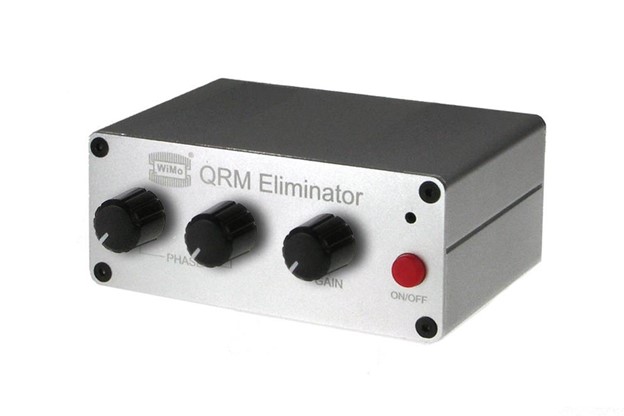
But first, a few clarifications.
QRM is distinguished from QRN, which stands for natural interference like static caused by electrical storms. Separating the terms QRM and RFI (radio frequency interference) is more complicated. One explanation says QRM (one of ham radio’s longstanding Q-codes) refers to noise produced by another transmitting ham, while RFI applies to human-made noise that comes from something other than a transmitter. Others say QRM refers to human-made noise in general regardless of the source. Some operators, in the heat of a pileup, may simply eschew acronyms and Q-codes and describe the interference in saltier language not appropriate for this blog. If this means you, it’s time to consider making a smart investment in a noise-canceling upgrade.
About WiMo’s QRM Eliminator
The QRM Eliminator is a simple signal phasing device billed as a tool for effectively reducing or removing noise interference for dramatically improved HF reception. WiMo states that the unit is based on an innovative concept and should not be compared with the performance of noise blanker or DSP circuits. The idea is to remove noise generated from offending local electrical system hardware and other electronic sources before it gets to the receiver. This local receive interference can come from a range of culprits, including high-tension power lines with bad connections, broken insulators, TV and monitor screens, computers, dimmers, low-voltage lighting, and so on.
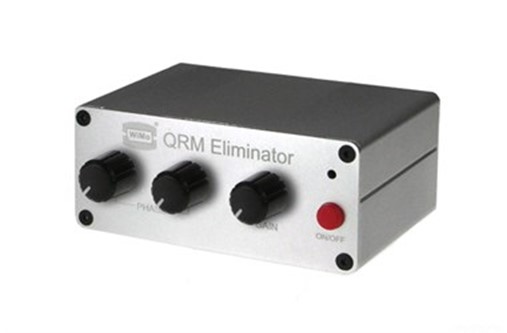
WiMo says the QRM Eliminator can get rid of local interference—weather from your own station or an electronics device hundreds of feet away—almost entirely, up to an S9 level, resulting in the likelihood of completely clear reception. It works regardless of whether or not you know the source of the noise. The device connects to the antenna port of the transceiver and to the antenna (or amplifier input) without any radio modifications required. An additional user-supplied auxiliary receiving antenna is required, such as a properly positioned eight-foot outdoor dipole antenna or a simple 20-foot wire in the shack, for example. This “noise sense” antenna receives mostly unwanted signals, while the transmitting antenna receives the same interference in a different phase along with the desired signal.
The QRM Eliminator allows the adjustment of the amplification and phase to cancel out the unwanted signal before it reaches the receiver front end. Noise or interference nulling can provide over 45 dB of unwanted signal suppression, in many cases resulting in clear reception of the desired signal. The device comes with a 2.1mm power cable assembly with the other end unterminated for connection to your power supply.
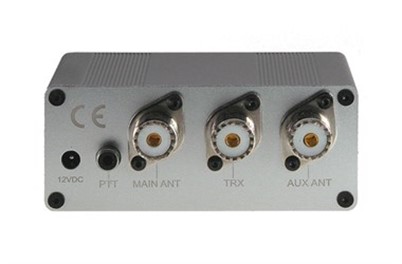
What do hams say about the QRM Eliminator?
Five Stars: “I’ve had a QRM problem at my QTH for a couple of years. This device is the answer. I had two bands that were unusable and now they all play very well. I highly recommend this product if you live in a neighborhood with electrical noise; mine is a hashy sounding static that I believe comes from a newly constructed building near my house. The noise level on 12M and the low end of 80 was over S9. I can almost eliminate it, getting it down to about S3.”
Next on our list are MFJ’s Noise Canceling Signal Enhancers,sold in regular (MFJ-1025) and deluxe (MFJ-1026) models. These units are designed to reduce noise or interference, or improve desired signals, before the noise affects sensitive receiver circuits. They are optimized over the range of 1.8 to 30 MHz and contain the interface circuitry necessary for operation with most modern HF transceivers. These MFJ units feature exceptional phase amplitude flatness, making adjustments easy and enabling users to null out interfering signals or peak desired signals with the adjustment of a few controls. Although these signal enhancers contain internal RF sensing for T/R switching, MFJ strongly recommends using the external T/R control connector on the rear panel for keying. These units run on 12 Vdc or 110 Vac with an optional adapter, sold separately.
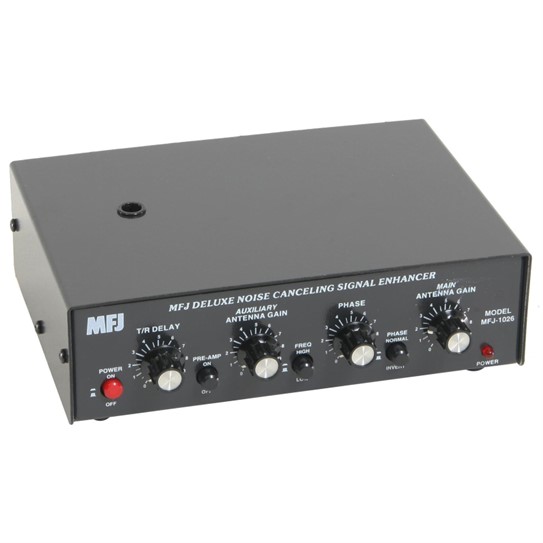
What do hams say about the MFJ Noise Canceling Signal Enhancer?
Five Stars: “I performed a considerable amount of research on this product prior to purchase. All the reviews were so positive. So, with my noise problem being unbearable on all bands, what did I have to lose? All I can say is WOW. Takes the noise level and drops it to nonexistent. I never thought I would see any relief from the 20dB noise with a ‘magic box.’ Made great use of it over the holidays. Would recommend it highly!”
For hams who want to take noise cancelation to the highest level, we recommend the DX Engineering NCC-2 Receive Antenna Phasing System. We’ll let this satisfied customer explain why this device sits at the top of our list:
Five Stars: “Very good product. Good value for the price. I usually do not review this early on after purchasing a product, but the NCC-2 thus far is a very potent tool against RFI noise that over several months had kept me from operating. Attempts were made with the power company and our searching locally for the source of the severe noise to no avail. I am using the NCC-2 with two W6LVP loops spaced 20 feet apart with rotors. Not only can the severe noise be nulled or removed, but signals can often be peaked also. Got severe local generated noise that can’t be resolved? This is the product to remedy it!”
This 300 kHz-30MHz variable phasing controller combines the received signals from one transmit antenna and one receive antenna, or from two receive antennas. By combining two stationary antennas, an array pattern is created with signal peaks and dips. Adjusting the phase control has the effect of electronically rotating or steering that pattern. Steering the null direction to significantly weaken an interfering signal or noise, local or distant, can dramatically enhance the reception of weak signals from other directions. Having this “reverse-beam” capability on low frequencies, AM Broadcast through HF, can provide amazing benefits for many types of operating.
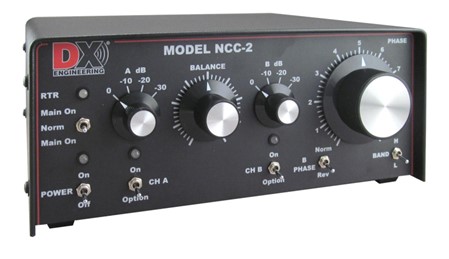
If you’d like to also use your radio functions to help dig out weak signals and reduce interference, read this OnAllBands article from blogger Mark, K8MSH, “How to Use RF Gain, Noise Blanker, and Other Transceiver Features to Improve Copy.”
DX Engineering also carries:
- Active noise-canceling headphones and DSP noise-canceling speakers
- Bhi parametric equalizers
- A variety of dummy loads that let you perform accurate transmitter tests that won’t interfere with other radio transmissions
- DX Engineering NOISELOOP Portable Receive Flag Antenna Kit—an excellent tool for locating noise sources from 1.8 through 30 MHz

